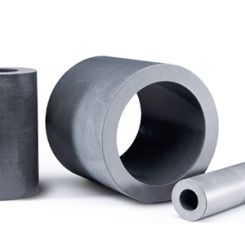
As the international political-economic environment moves further away from 2019, it is becoming increasingly clear that instability appears to be a more or less permanent feature of the macro landscape. For companies that do business internationally, the rapidly shifting landscapes can make strategic planning challenging. While the international system will eventually settle into something resembling stability, or at least a level of instability with some more or less predictable rules for managing it, that day does not currently appear to be near. Rather than being the result of one political faction in one country (something that could theoretically be reversed at the next election), today’s instability is being driven by some deep-seated trends and imbalances being rebalanced. In other words, it is more structural and bigger than a single government.
So, how can a company plan for the long term in such an unstable environment? There are several principles to bear in mind:
1. Ignore the headlines
News organizations make their money by generating traffic, and that can often mean making attention grabbing statements and stories. However, what is actually happening on the ground is often much more mundane than the commentary depicts. As a commercial banker during the first phase of the COVID-19 pandemic, I and my colleagues were heavily involved in making what was called Paycheck Protection Program (PPP) loans to small businesses. One narrative that seemed to be out was that most of the money ended up going to big businesses that did not really need it and there was not enough for the small businesses. Although I am sure that such cases existed, neither I nor any of my contacts in the local banking industry have heard of a significant number of these cases. The picture painted in the press of big players getting most of the money while the majority of small businesses were left out is simply incorrect. However, that was the picture one walked away with, if one simply relied on the headlines.
From the perspective of a given business, if you already have well-established relationships, there is often no need to significantly modify those due to external factors that are currently making headlines. Most of what is in the news is short term and will likely have minimal long-term effects.
2. Build redundancy in business relationships
Given the instability, a long-term strategic vision needs to build in redundancy, even if this reduces overall profits. Over the last 30 years, concepts such as just-in-time logistics or lean manufacturing developed and expanded. In addition, companies have worked to improve efficiency, cut every expense that they can and squeeze every bit of profit from their operation. In a stable world, this strategy can make a lot of sense (even if the author’s early career experience in operating such systems as an international freight forwarder brought lessons in how risky such systems can be).
However, in an unstable world, having multiple suppliers and customers located in different countries will be a critical factor in creating a resilient and flexible system. For example, instead of sourcing inputs or products from one (or multiple) suppliers in a single country, look for suppliers in multiple countries, even if this might not be the most cost-effective option. What you are losing in cost, you are gaining in systemic flexibility. One can think of it as purchasing insurance in a different form. If conditions in one country turn negative, the relationships with other suppliers/customers in other countries will already be in place to enable you to smoothly navigate whatever problem happened to crop up.
I once had a customer that was selling agricultural products, primarily in China. While he had a few customers in other locations, the bulk of the customers were in China. Then the Trump Administration (before the pandemic) put tariffs on Chinese goods, and China put retaliatory tariffs on many of the products he was selling, making him uncompetitive in China. While he tried to refocus his business into other countries, he was ultimately unsuccessful.
In short, a business that had been profitable for many years was undone due to a geopolitical shift and not enough redundancy in his customer relationships.
3. Reevaluate production locations
If you are a company that produces a product, an unstable world poses a unique challenge in that the decision to locate a production facility somewhere is often a 25 (or more) year bet. There are the upfront/sunk costs that must then be recouped over many years. In the current environment, shutting down existing facilities in certain countries often will not make sense (those costs are already sunk); however, actively looking to open additional facilities in different locations might be a solid long-term investment in strategic flexibility.
One example of this is Copart (CPRT), an online auto-auction company. Their value proposition has historically been to pick up wrecked cars, pull them into one of their yards, sell them at auction, deduct their costs/fees and remit the rest to the insurance company (which uses the money to recoup the loss on the paid claim for the wrecked car). Part of the strategy to deliver value has been to establish lots of yards in different locations to bring a wrecked car in quickly and turn it around. To that end, Copart has bought up significant amounts of land in the U.S. and the other countries in which they operate. Even though the costs associated with purchasing and starting up a new yard may negatively impact the results for a given quarter, they view the flexibility and expanded capacity allowing them to respond more quickly in a given geographic location as a wise strategic investment.
When deciding on a new location, centering production facilities in the same country as the majority of one’s customers would often be ideal. However, the competitive nature of the market for your products may not allow for this if the cost of producing in your country is too high. Regardless, diversifying one’s production locations is an important strategic initiative in the new world that we are experiencing.
Long-term strategic planning today requires that a company incorporate flexibility into its operations, even at the cost of lower profits. The lack of stability in the international political economy is likely to put a premium on companies that have adequately incorporated strategic flexibility into their operations. The international system is changing. Companies will find that they need to change with it.

